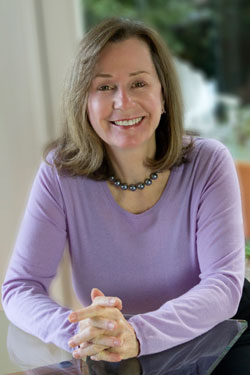 Probably the last thing the crowd waiting in line outside the movie theatre was expecting was the serious-faced high school drama students walking towards them with outstretched arms holding silver platters, and asking, “Would you want a Wonderbar?” then breaking out in smiles, and adding, “Just one sweet sample. There’s more inside.”
Probably the last thing the crowd waiting in line outside the movie theatre was expecting was the serious-faced high school drama students walking towards them with outstretched arms holding silver platters, and asking, “Would you want a Wonderbar?” then breaking out in smiles, and adding, “Just one sweet sample. There’s more inside.”
Curiosity and anticipation grew further down the line as people watched the young men and women, dressed in fitted, international orange shirts and chocolate-colored slacks.
 Wonderbars were new, locally made fudge and caramel cookies. The maker had forged a partnership with the movie theatre operator, just as he had with the owners of the nearby, locally-owned grocery store, to introduce his new product by paying the enthusiastic drama students to hand out samples to those waiting in lines in both places.
Wonderbars were new, locally made fudge and caramel cookies. The maker had forged a partnership with the movie theatre operator, just as he had with the owners of the nearby, locally-owned grocery store, to introduce his new product by paying the enthusiastic drama students to hand out samples to those waiting in lines in both places.
Of course, the high school’s journalism students were also enlisted in this partnership. At both locations these cub reporters interviewed the tasters, asking the key question, “What do you like best about this bar?” When interviewing, they captured the happy reactions with the video function on the smart phones that were lent to them for the project.
Each Wonderbar was presented on an orange card that described two offers. Cardholders could get a free package of bars when they bought three other packages within the week—either from the store or the movie theatre.
They also invited people to visit the Wonderbar web page the following week to vote on their favorite short video from those created by the students who conducted the in-line interviews. Of course tasters were motivated to view the videos because they knew they or their friends might be appearing in one. Building in such bragging rights generates a powerful pull to participate.
When the students gave away the bars or asked questions, they would sidle next to the lucky tasters rather than facing them because we get along better when we aren’t facing off.
The non-patterned orange clothing drew people’s attention, and held it longer than if they had worn patterned clothing that, at a subliminal level, is distracting.
Now is the time to confess that this is my “what if” dream scenario, sparked by a successful campaign I helped design years ago, dubbed the Bonbon Bombshell by Jim Kozak of InFocus, a publication of the Association of National Theatre Owners.
I offer this possible campaign in the hope that it spurs you to create customer-centric partnerships that attract more customers, per-customer spending and free media coverage — while spending less — and enjoying the camaraderie of shared success.
Plus, partnering with others around a sweet spot of mutual benefit also builds sufficient trust between partners to spark repeat and new campaigns. Such partnership can diversify and strengthen community ties, and that’s not a bad thing in these times where more people are working and living alone.
 I’ve suggested other profitable ways to partner in my book Walk Your Talk and my blog post. One method is to offer a gift coupon to your biggest spenders, as you define them. That may mean they buy a big ticket item or spend a certain minimum amount in a set time period. They can pick up their gift at your partner’s outlet. Your partner reciprocates by offering their biggest spenders a similarly priced gift coupon. Thus you both gain a first-hand introduction to each other’s most lucrative customers.
I’ve suggested other profitable ways to partner in my book Walk Your Talk and my blog post. One method is to offer a gift coupon to your biggest spenders, as you define them. That may mean they buy a big ticket item or spend a certain minimum amount in a set time period. They can pick up their gift at your partner’s outlet. Your partner reciprocates by offering their biggest spenders a similarly priced gift coupon. Thus you both gain a first-hand introduction to each other’s most lucrative customers.


